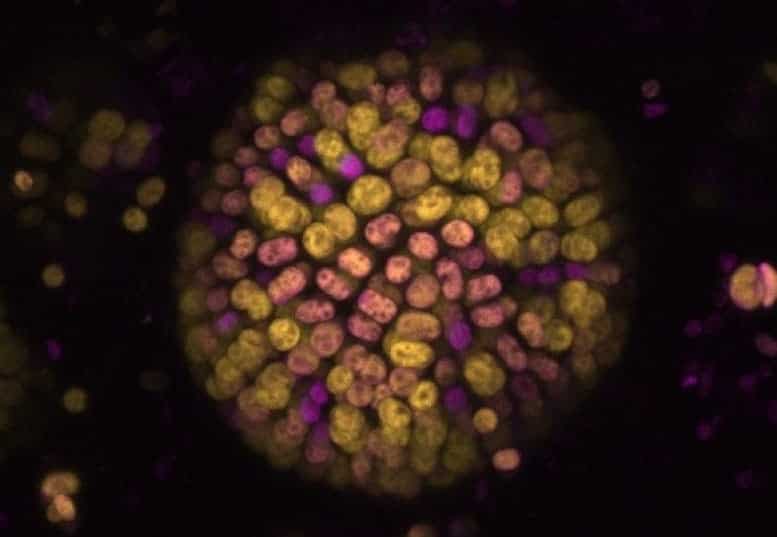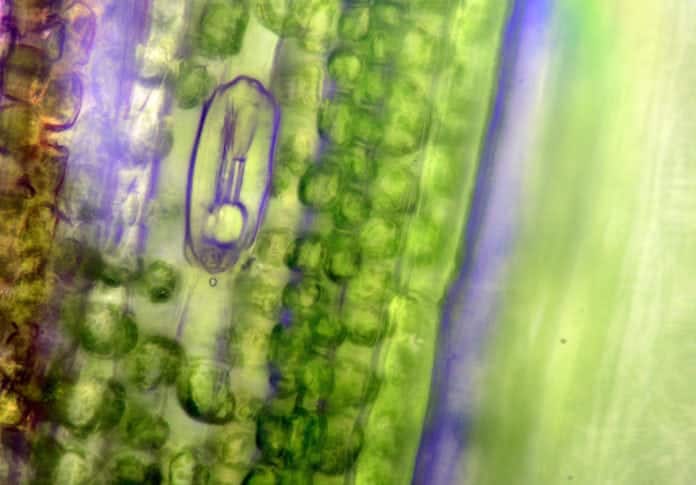Newly Discovered Photosynthesis Can Lead to Finding Alien Life on Earth
Scientists from the Imperial College London have discovered a unique photosynthesis that could possibly lead to the detection of alien life on earth. The study was supported by the Biotechnology and Biological Sciences Research Council (BBRSC) and different involved groups from Paris, Milan, and Saclay.
Peter Burlinson, lead frontier bioscience at BBRC-UKRI says “this discovery will give a new perspective regarding the basic process of photosynthesis.” Normally, plants emit light from infra-red but the newly discovered photosynthesis has emitted light from a near-infrared light. It occurs in a wide range of cyanobacteria, blue-green algae that are commonly found in the beach rocks of Australia and bacterial mats in Yellowstone.
“This unique photosynthesis will also pave the way to restructure existing crop growth technologies and rewrite textbooks quicker,” says Burlinson. At present, scientists are replicating the process with the aim of making new “textbook-changing” innovations in the field of bioscience.
Life beyond “red limit”
The custom type of photosynthesis uses green pigmentations called Chlorophyll-a. It

collects light and energy from an
infra-red light and converts them into important biochemicals and oxygen.Since Chlorophyll exists in almost all types of green plants, both terrestrial and underwater, it has become the basis for the “red limit”, which is the minimum amount of energy needed for oxygen production.
Using astrobiology, the red limit determines whether complex life formations could have existed on earth.
Conversely, the new discovery has strengthened this hypothesis by revealing a new chlorophyll called Chlorophyll-f. Burlinson explained that the research was conducted by growing cyanobacteria under near-infrared light.
At first, they thought that the custom Chlorophyll-a will start emitting light from the infra-red exposed areas but the system eventually shut down and various chlorophyll started to take over – one of them is called Chlorophyll-f.
Instead of harvesting light, Chlorophyll-f progressed under the shady conditions of cyanobacteria. “This phenomenon has made us rethink what we thought was possible under existing scientific principles,” says Professor Bill Rutherford, from the Department of Life Science at Imperial.
Not the first discovery
According to Rutherford, this is not the first time that they have discovered a new photosynthesis beyond the “red limit.”
Another photosynthesis called cyanobacterium, Acaryochloris also shares similar key events with Chlorophyll-f. However, it is species-specific and is only found underneath a green sea-squirt that overshadows light emission from the cyanobacteria in near-infrared space. So, scientists have labeled it as “one-off.”
The Chlorophyll-f is widespread among infrared-rich shaded conditions but in normal condition, scientists prefer to use the standard form of photosynthesis. “The light damage is more severe beyond the limit and we couldn’t take the risk,” says Rutherford. “We have to make sure that the shaded environment is stable before using it.”
According to Dr. Andrea Fantuzzi from the Department of Life Sciences at Imperial, the discovery of Chlorophyll-f will help them formulate solutions on how to grow crops using a wider range of light. “We will take it from the science of how the cyanobacteria were able to protect themselves from the light beyond the red limit,” says Fantuzzi.
Challenging assumptions
The new discovery is something scientists have never seen before. In contrast with the traditional photosynthesis, it has taken science beyond what everyone believed from textbooks.
The experiments further revealed that a chlorophyll called “accessory” performed most of the chemical steps instead of the “special pair” of chlorophyll as written on textbooks.
The steps are rather complex and extraordinary. Scientists believe this could change everyone’s views about the existing scientific principles written on textbooks.
According to Dr. Dennis Nürnberg, the first author of the study, this discovery is a proof that there are still many things to discover in science. “Nature can surprise us in so many ways and we are taking more steps to understand the various aspects of photosynthesis.”
































